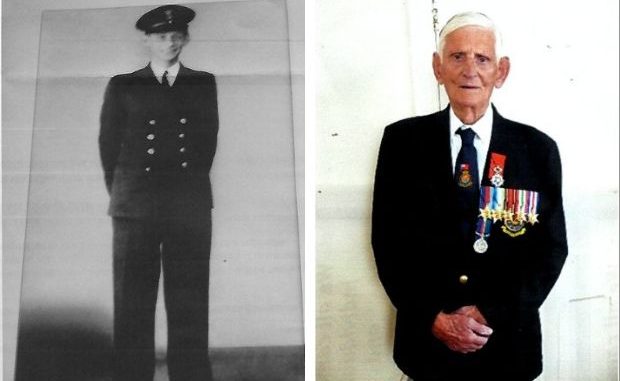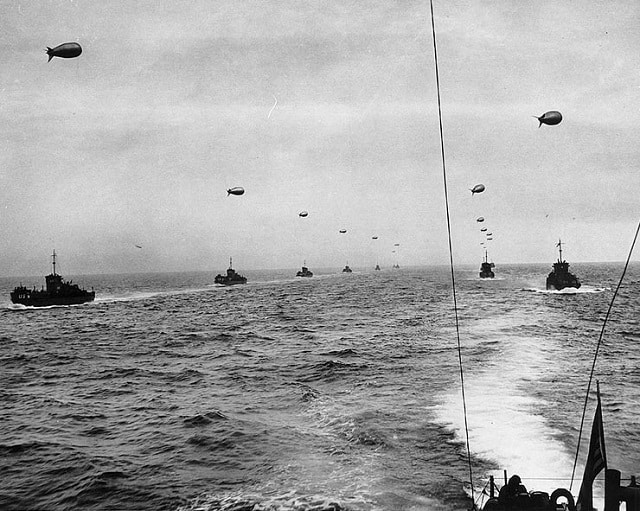
By Jodie Nesling
As the surge of seaspray soared against the side of the deck a young sailor eager to learn the ropes stood aboard the training ship, Vindicatrix.
As a 16-year-old deckhand Bert Cox was growing accustomed to life at sea but in 1939 life as he knew it was about to descend into the darkness of World War Two and saw him play a pivotal role in the D-Day landings.
Now the 96-year-old veteran is proudly taking to the sea once more as an honoured guest aboard the Fred Olsen cruise ship, Boudicca.
The father-of-one will revisit the famous beaches as part of landmark 75th anniversary commemorations. His role during the landings was fixing fuel lines as gun fire roared across the coast as one of the most heroic rescue operations in history took place.
Prior to D-Day he was involved with operation PLUTO (Pipe Lines Under The Ocean) which funneled oil to France in order to aid the allied invasion.
Bert is the oldest member of the Independent Vindicatrix of East Kent Association – M.N and will sail from Dover on June 2 to arrive on June 6 where he will join more than 300 veterans.
Chairman of the association Philip Hughes says they are aware how special the trip will be for nonagenarians. “Due to their ages it may be the last time these gallant men will be able to return in any numbers. He has a number of well deserved medals including the Burma Star and the French Ordre National de la Legion d’honneur, and all members of our association, including wives / partners are extremely proud of Bert and wish him well for the future. It’s people like Bert who are a reminder to all that the Merchant Navy and merchant seamen did their bit in wartime. Thank you, Bert.”
Bert was born in Bermondsey and as a deck trainee participated in terrifying endeavours across the waves. On his first ship running to Canada his convoy was attacked; fortunately Bert’s vessel escaped – others close by were not so lucky.
The Merchant Navy was heavily involved in the Salerno landings (Allied invasion of Italy,1943) and soon the seaman was transferred into the Royal Navy where he served four years.
Living in Margate for the past eight years he joined the association in 2013.
He is looking forward to returning to Normandy to see how it has changed.
The Normandy Landings

Launched on June 6, 1944 Operation Neptune (commonly known as D-Day,)it was the largest seaborne invasion in history.
The landing of 24,000 British, US and Canadian troops began the liberation of German-occupied France from Nazi control, and laid the foundations of the Allied victory on the Western Front.
The weather on D-Day was far from ideal and the operation had to be delayed 24 hours; a further postponement would have meant a delay of at least two weeks as the invasion planners had requirements for the phase of the moon, the tides, and the time of day that meant only a few days each month were deemed suitable. Adolf Hitler placed German Field Marshal Erwin Rommel in command of German forces and of developing fortifications along the Atlantic Wall in anticipation of an Allied invasion.
The amphibious landings were preceded by extensive aerial and naval bombardment and an airborne assault—the landing of 24,000 US, British, and Canadian airborne troops shortly after midnight. Allied infantry and armoured divisions began landing on the coast of France at 06:30. The target 50-mile (80 km) stretch of the Normandy coast was divided into five sectors: Utah, Omaha, Gold, Juno, and Sword. Strong winds blew the landing craft east of their intended positions, particularly at Utah and Omaha.
The men landed under heavy fire from gun emplacements overlooking the beaches, and the shore was mined and covered with obstacles such as wooden stakes, metal tripods, and barbed wire, making the work of the beach-clearing teams difficult and dangerous. Casualties were heaviest at Omaha, with its high cliffs. At Gold, Juno, and Sword, several fortified towns were cleared in house-to-house fighting, and two major gun emplacements at Gold were disabled, using specialised tanks.
The Allies failed to achieve any of their goals on the first day. Carentan, St. Lô, and Bayeux remained in German hands, and Caen, a major objective, was not captured until 21 July. Only two of the beaches (Juno and Gold) were linked on the first day, and all five beachheads were not connected until 12 June; however, the operation gained a foothold which the Allies gradually expanded over the coming months. German casualties on D-Day have been estimated at 4,000 to 9,000 men. Allied casualties were at least 10,000, with 4,414 confirmed dead.

